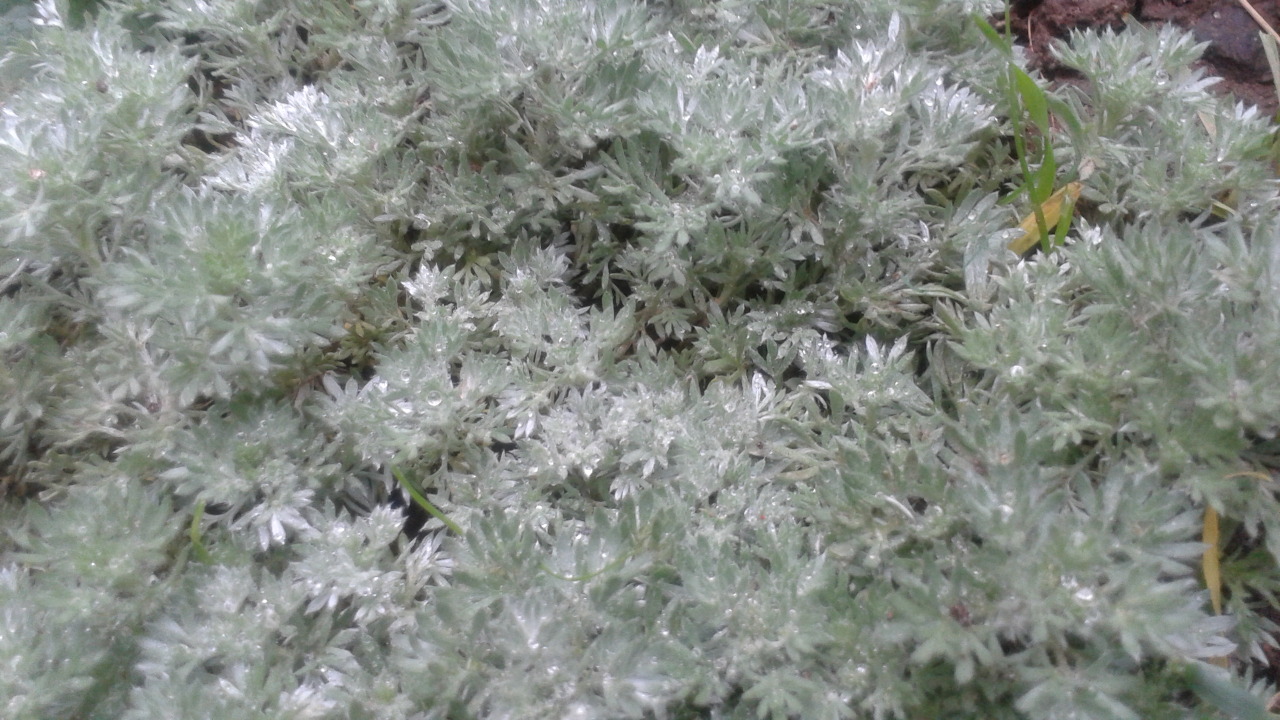 |
| Fringed Wormwood |
Within this family are:
- Mugwort - A common roadside plant in some areas, sometimes used to improve the digestibility of heavy meals, and sometimes used as a fumigant due to the pleasant, mellow aroma of the smoke which is produced during smudging.
- Sagebrush - A large group of plants which appear in arid and semi-arid plains. Plants in this group are generally slow-growing with soft, silvery foliage and a camphorous aroma, which is repellant to many insects and tends to reduce grazing on their foliage by most livestock.
- Wormwood - Plants in this group have a bitter flavour which was once used similarly to hops in beer making. There is some pretty extreme diversity among most species in this group, and even within each species. Some are feathery and silver, while others have single pinnate leaves and some even appear as small trees in their natural habitat.
- Sagewort - Also known as Sweet Annie, this annual member of the Artemisia family is currently grown to produce anti-malarial drugs in third world countries.
- Southernwood - A woody perennial, southernwood is slightly more delicate then many of the other artemisias, and has a soft appearance due to the fine, needle like foliage.
- Tree Wormwood - One of the suspected parents of the popular 'silver mound' artemisia, tree wormwood is hardy, silvery and has finely cut foliage.
- Redstem Artemisia - A biennial, this strain is known in TCM to be used against 'damp-heat'.
Propagation:
- Seed - Almost all members of this plant family propagate readily from seed. A single plant can produce over 50,000 seeds in a single season, which is a common natural mechanism used by plants growing in arid areas.
- Cuttings - Plant material taken from softwood or hardwood cuttings usually root rapidly without any special treatment provided sufficient leaf material has been removed to prevent self-desiccation (drying out due to excessive respiration). This method is used exclusively for most varieties used in current landscaping practices.
- Root Division - Many plants in this family (usually not those used for landscaping purposes) readily self-propagate rhizomatically, or by growing roots which in turn produce new growth above ground. This is usually considered an invasive mechanism.
- Powis Castle - Artemisia arborescens (hybrid)-
- Silver Mound - Artemisia schmidtiana
- Fringed Wormwood - Artemisia frigida
- Wormwood - Artemisia absinthium
- White Sagebrush - Artemisia lercheana
- Wyoming Sagebrush - Artemisia tridentata wyomingensis
- Black Wormwood - Artemisia genipi
- Mountain Sagebrush - Artemisia tridentata vaseyana
- Dwarf Sagebrush - Artemisia arbuscula
- Yomogi - Artemisia princeps
- Big Sagebrush - Artemisia tridentata tridentata
- Silver Sagebrush - Artemisia cana
- Tree Wormwood - Artemisia arborescens
- Richter's herbs - Extensive source of information and seed material from around the world.
- Wikipedia - articles on wormwood, artemisia, mugwort
- Missouri botanical garden - article on Powis Castle
- Rob's plants - silver mound artemisia
- Perennial resource - silver mound artemisia
- Wikipedia - southernwood
- Mountain Valley Growers - tree wormwood
No comments:
Post a Comment